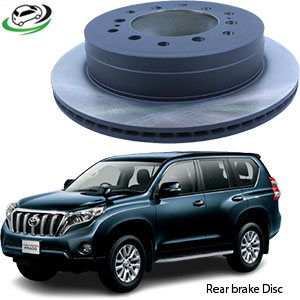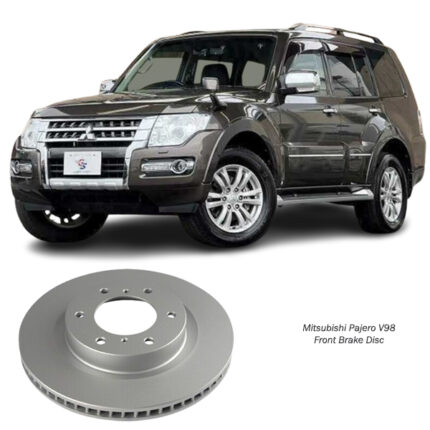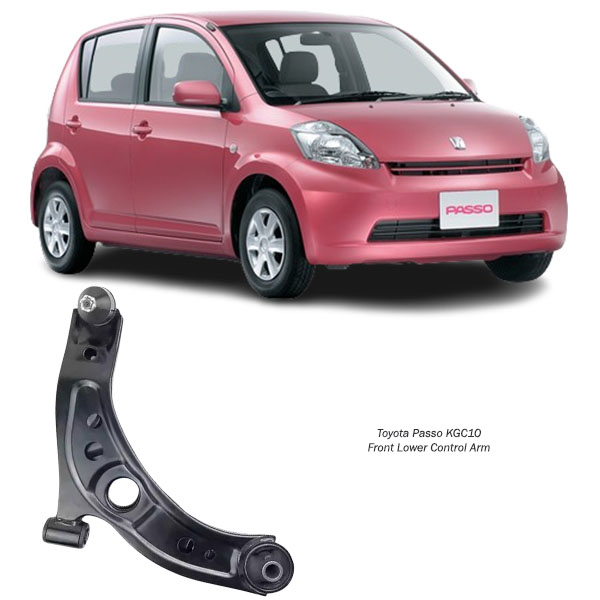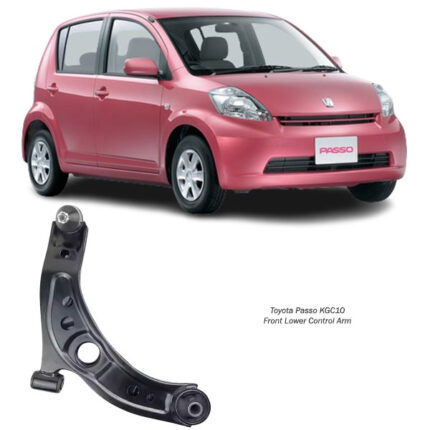Get Toyota Passo KGC10 Front Lower Control Arm RH 48068-B1010 in Kenya
The Front Lower Control Arm (RH) is a vital component of your vehicle’s suspension system, responsible for connecting the chassis (frame) to the front right wheel. It allows controlled movement of the wheel while maintaining stability, comfort, and handling precision.
🚗💨 Without a functioning control arm, steering and suspension performance would be severely compromised, leading to unsafe driving conditions.
Why is the Control Arm Important? 🏁
✔️ Keeps the wheel aligned and stable while driving.
✔️ Ensures smooth suspension movement over bumps.
✔️ Reduces vibrations and improves ride comfort.
✔️ Connects the wheel hub assembly to the vehicle’s frame.
✔️ Works with the ball joint and bushings to absorb shocks.
2. Understanding the Control Arm’s Role in Suspension ⚙️
A vehicle’s suspension system is designed to absorb shocks, provide stability, and allow wheels to move independently. The front lower control arm (RH) is a key link in this system.
Main Functions of the Lower Control Arm 🔩
1️⃣ Holds the front right wheel in position while allowing it to move up and down.
2️⃣ Connects to the steering system, allowing for controlled wheel movement.
3️⃣ Works with the shock absorbers and springs to absorb road impacts.
4️⃣ Ensures wheel alignment and stability during braking, acceleration, and turns.
💡 Think of the control arm as your vehicle’s “shoulder joint,” allowing movement while keeping everything stable.
3. Key Components of a Front Lower Control Arm 🛠️
A front lower control arm consists of several parts that work together to maintain suspension and steering integrity:
1. Control Arm Body 🏗️
- Usually made from stamped steel, aluminum, or cast iron.
- Provides structural strength and durability.
2. Ball Joint 🔄
- A pivot point that connects the control arm to the steering knuckle.
- Allows controlled wheel movement while steering and absorbing shocks.
3. Bushings 🏎️
- Made from rubber or polyurethane, connecting the control arm to the vehicle’s frame.
- Helps absorb vibrations and reduces metal-to-metal contact.
4. Mounting Points 🔧
- Bolted onto the chassis and steering components for a secure fit.
4. Types of Front Lower Control Arms 🚘
Different vehicles and driving conditions require different control arm designs.
1. Stamped Steel Control Arms 🏗️
✔️ Affordable and commonly found in standard vehicles.
✔️ Lightweight yet strong.
❌ Prone to rust over time.
2. Cast Iron Control Arms 🏋️
✔️ Extremely durable, used in trucks and SUVs.
✔️ Handles heavy loads and rough terrain.
❌ Heavier than other materials.
3. Aluminum Control Arms 🚀
✔️ Lightweight and corrosion-resistant.
✔️ Found in high-performance and luxury vehicles.
❌ More expensive than steel or cast iron.
5. How Does a Front Lower Control Arm Work? ⚙️
The front lower control arm (RH) moves in sync with the suspension system, steering system, and road conditions. Here’s how it functions:
1️⃣ When Driving Straight 🛣️
- The control arm keeps the right front wheel aligned with the chassis.
2️⃣ When Going Over Bumps 🏔️
- The wheel moves up and down, and the control arm absorbs the impact with help from the bushings and ball joint.
3️⃣ When Turning the Steering Wheel 🔄
- The control arm allows the wheel to pivot while maintaining stability.
4️⃣ During Braking 🏁
- The control arm prevents excessive wheel movement, improving stopping power.
💡 Without a properly functioning control arm, your ride would be rough, unstable, and unsafe.
6. Signs of a Failing Front Lower Control Arm (RH) 🚨
A worn-out control arm can cause serious safety issues. Look out for these warning signs:
1. Clunking or Knocking Sounds 🔊
- Loose or worn-out bushings and ball joints create a knocking noise when driving over bumps or turning.
2. Poor Steering Control 🔄
- A faulty control arm affects wheel alignment, making steering feel loose or unstable.
3. Uneven Tire Wear 🏁
- A misaligned wheel causes uneven tire wear, reducing tire lifespan.
4. Vibrations in the Steering Wheel 🚗
- Worn bushings allow excessive movement, causing vibrations.
5. Excessive Play in the Suspension 🏎️
- If the vehicle leans too much during turns, the control arm could be failing.
🚨 Ignoring these symptoms can lead to complete suspension failure and loss of vehicle control!
7. How to Maintain a Front Lower Control Arm 🔧
Proper maintenance ensures the control arm lasts longer and performs efficiently.
1. Regular Inspections 🔍
✔️ Check for cracks, rust, or bushing wear every 20,000 – 30,000 km.
2. Keep Suspension Lubricated 🛢️
✔️ Grease the ball joints to prevent excessive wear.
3. Replace Worn Bushings 🏎️
✔️ If the rubber bushings crack or degrade, replace them before they fail.
4. Avoid Rough Driving 🚗💨
✔️ Potholes, off-roading, and aggressive driving can shorten control arm life.
5. Get Wheel Alignments Regularly 🛞
✔️ Misaligned wheels put extra strain on the control arm.
8. How to Replace a Front Lower Control Arm (RH) 🔄
Replacing a front lower control arm is a moderately complex job. Here’s a general guide:
Tools Needed 🧰
✔️ Jack & Jack Stands
✔️ Wrench & Socket Set
✔️ Ball Joint Separator
✔️ Torque Wrench
Step-by-Step Replacement Guide 🏗️
1️⃣ Lift the Vehicle – Secure it with jack stands.
2️⃣ Remove the Front Wheel – Gain access to the control arm.
3️⃣ Detach Ball Joint – Use a ball joint separator to disconnect it from the steering knuckle.
4️⃣ Unbolt the Control Arm – Remove mounting bolts and bushings.
5️⃣ Install New Control Arm – Secure it in place with bolts.
6️⃣ Reconnect Ball Joint & Wheel – Ensure everything is tight.
7️⃣ Lower the Vehicle & Test Drive – Check for noises or alignment issues.
🚨 After replacing a control arm, always get a wheel alignment to ensure proper handling!
10. Conclusion 🎯
The Front Lower Control Arm (RH) is essential for suspension stability, steering control, and ride comfort. Regular maintenance and timely replacement ensure a smooth and safe driving experience.
Follow us on Facebook for more parts.




